In Photos: How Udaipur’s 500-Year-Old Lakes Provide Water to 5 Lakh People
In Rajasthan’s arid landscape, where rivers flow only briefly during the monsoon, water must first learn to crawl before it can stand. Udaipur, the ‘City of Lakes’, is a living testament to that transformation. Nestled in the Aravalli Hills, the city is sustained by an extraordinary network of interconnected lakes — a 500-year-old engineering marvel that continues to shape lives, livelihoods, and the environment to this day.
These reservoirs, built with remarkable foresight, not only ensure water security in an otherwise dry region but have also shaped Udaipur’s cultural identity and economy. Constructed in the 16th century under Maharana Udai Singh II, the system comprises iconic water bodies like Lake Pichola, Fateh Sagar, Jaisamand, and Udai Sagar.
Functioning much like a natural water tower, these lakes store monsoon rains, regulate water flow, and provide a crucial lifeline to around 5 lakh residents, over a million annual tourists, and vast stretches of agricultural land.
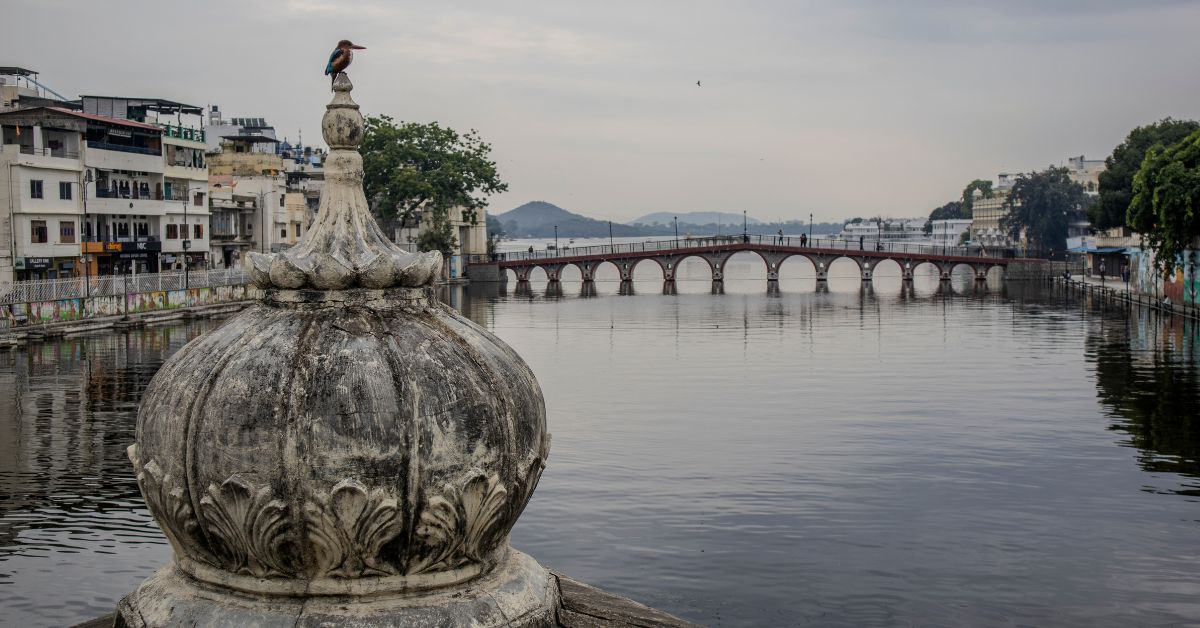 Lake Pichola, framed by Udaipur’s skyline, reflects the city’s lifeline — with an Indian Roller on an ancient arch symbolising the lake’s ecological role.
Lake Pichola, framed by Udaipur’s skyline, reflects the city’s lifeline — with an Indian Roller on an ancient arch symbolising the lake’s ecological role.
A vision rooted in survival
With an average annual rainfall of just 636 mm, Udaipur has always faced acute water scarcity. Recognising the urgent need for a year-round water source, Maharana Udai Singh II, with help from the local Bhil tribal community, strategically constructed Lake Pichola.
Subsequent rulers expanded this legacy by building more lakes and connecting them through a carefully designed network of canals, sluices, and overflow channels. The result is a self-sustaining water cycle that still operates today.
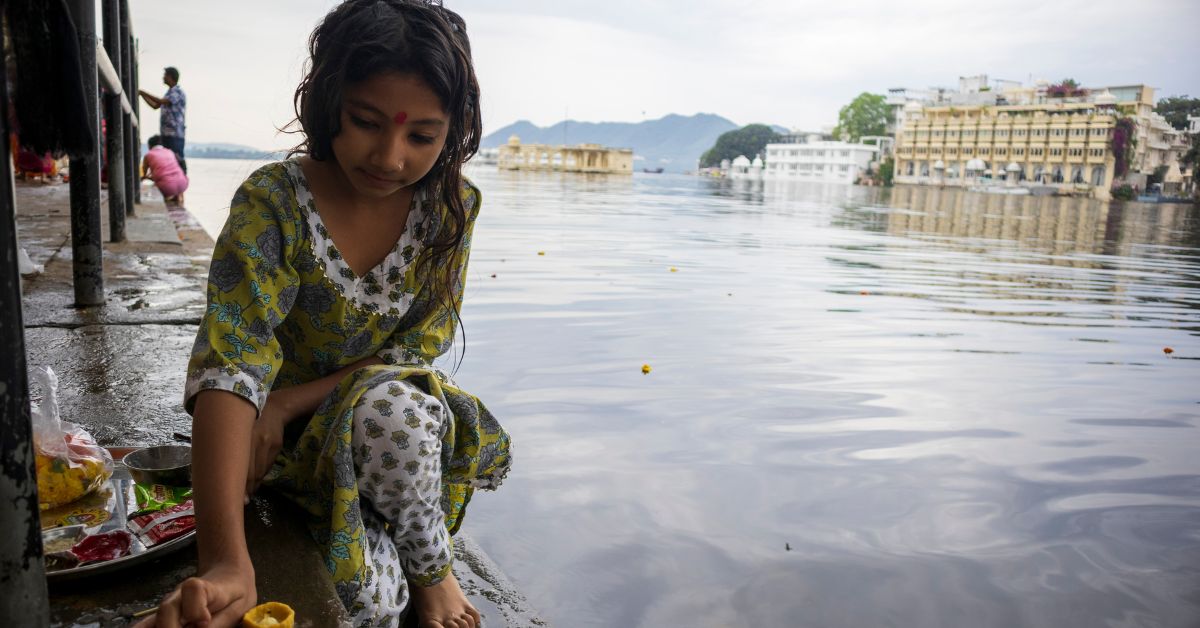 Palak performs Navratri rituals at Gangaur Ghat, reflecting the lake’s deep spiritual and cultural significance
Palak performs Navratri rituals at Gangaur Ghat, reflecting the lake’s deep spiritual and cultural significance
How the lakes function as a water tower
Much like glacier-fed systems in the Himalayas, Udaipur’s lakes operate on three core principles:
1. Storage and regulation:
- Collectively, the lakes store approximately 83.8 lakh cubic metres of water each year, ensuring supply during dry months.
- Interlinked overflow channels move excess water from higher to lower lakes, preventing flooding while maximising storage.
2. Interconnectivity and flow dynamics:
- The Ahar River serves as the central artery, moving water between lakes.
- Strategically placed canals and sluices balance water distribution, maintaining ecological equilibrium.
3. Urban and agricultural sustainability:
- Over 70 percent of Udaipur’s population depends on lake water for drinking and domestic use.
- The system irrigates more than 2,000 hectares of agricultural land surrounding the city.
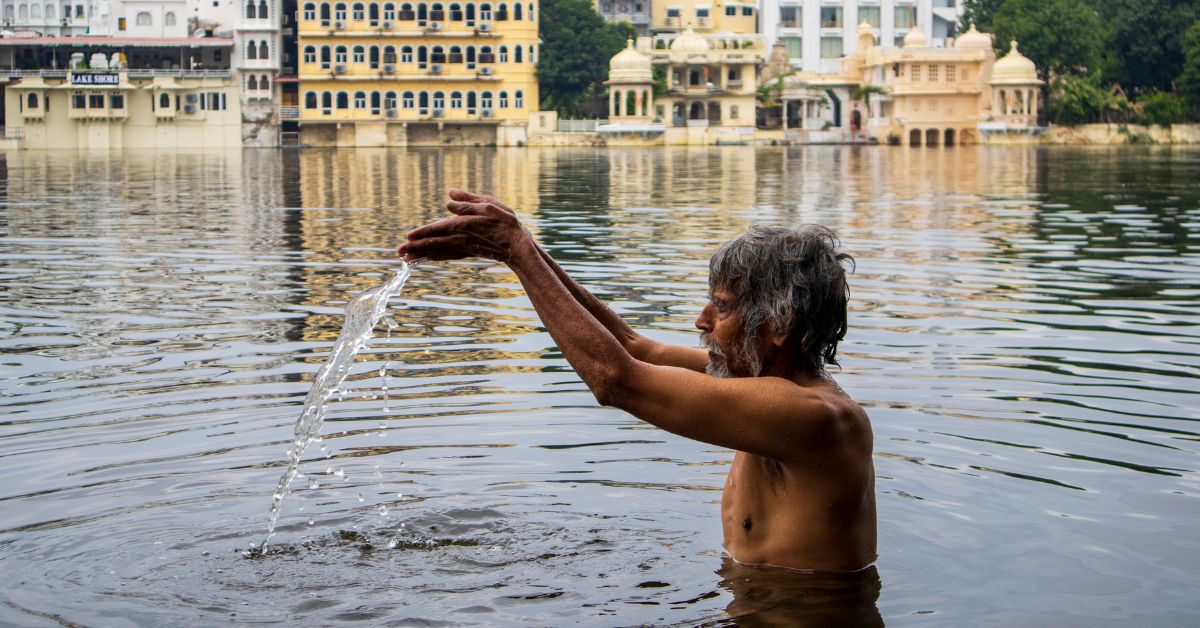 An elderly priest’s sunrise dip reflects Udaipur’s enduring spiritual bond with its lakes.
An elderly priest’s sunrise dip reflects Udaipur’s enduring spiritual bond with its lakes.
Challenges threatening a 500-year legacy
Despite their resilience, Udaipur’s lakes are under growing threat:
- The Ahar River, once a clean conduit, now carries 100–150 million litres of untreated sewage and industrial waste daily.
- Ritual offerings and plastic waste degrade water quality.
- Urban expansion has encroached on catchment areas, disrupting inflow and reducing storage capacity.
- Rising temperatures and unpredictable rainfall, driven by climate change, endanger the balance of this fragile ecosystem.
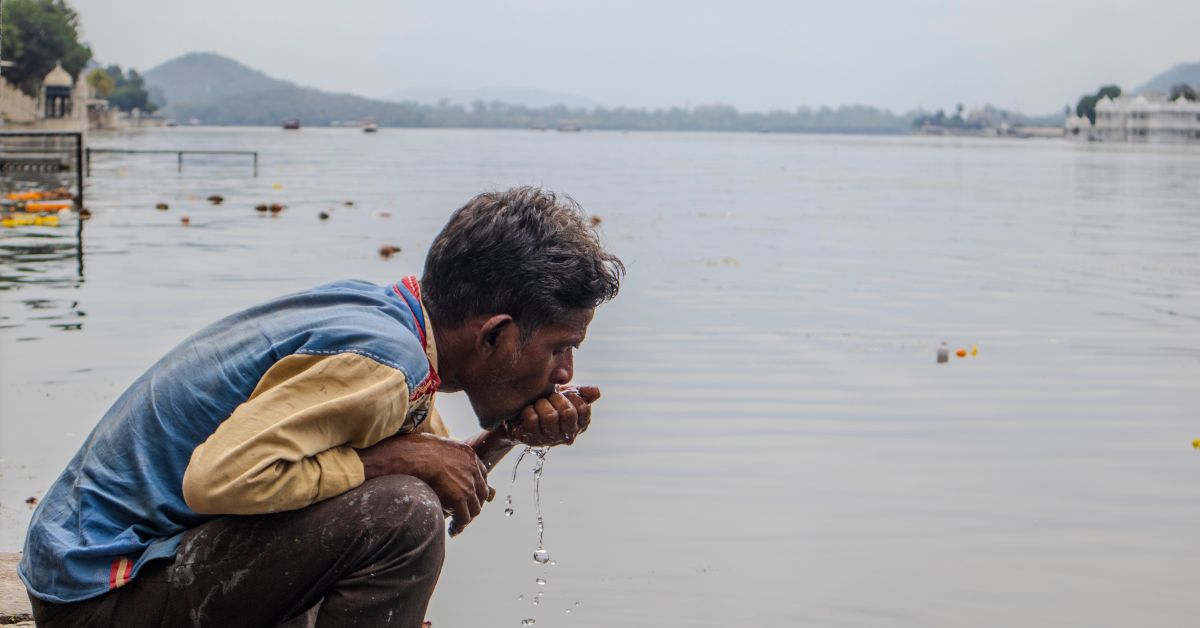 A man drinks water from the lake, reflecting its historical reverence and vital role in the community.
A man drinks water from the lake, reflecting its historical reverence and vital role in the community.
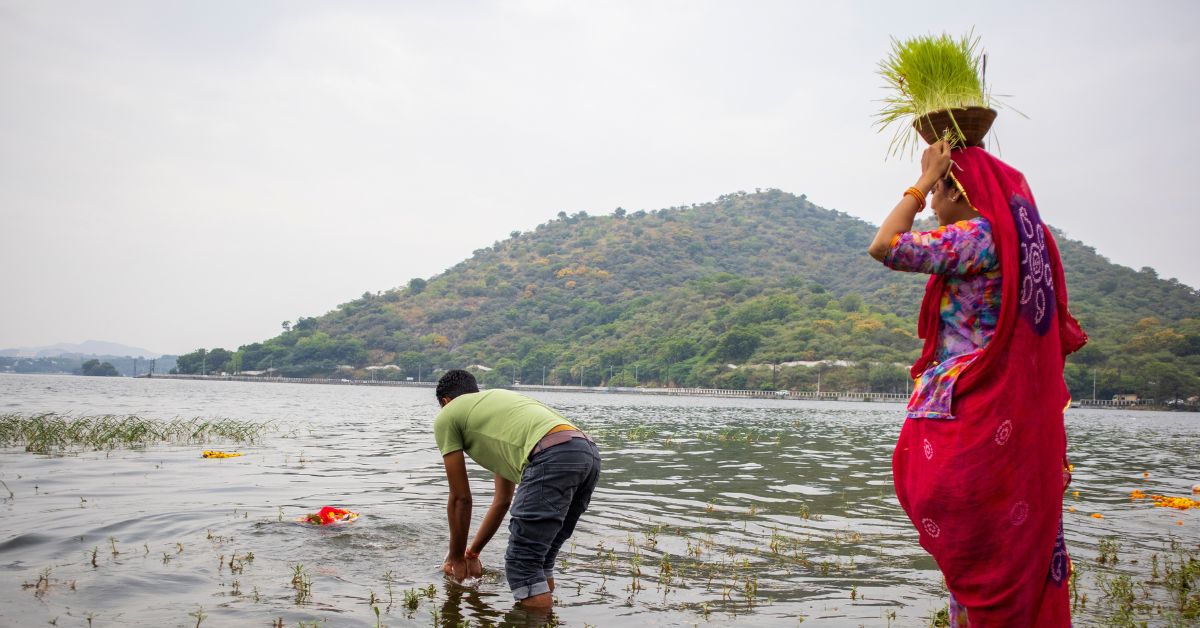 A couple immerses a Durga idol in Fateh Sagar Lake — a Navratri ritual that reflects both faith and ecological challenge.
A couple immerses a Durga idol in Fateh Sagar Lake — a Navratri ritual that reflects both faith and ecological challenge.
In the face of these challenges, restoration efforts are combining modern solutions with traditional wisdom:
- Desilting operations are regularly carried out to increase lake depth and storage.
- Sewage treatment upgrades under the AMRUT initiative aim for 100 percent coverage by 2030.
- Community engagement, particularly women-led clean-up drives, plays a pivotal role in maintaining lake health and spreading awareness.
- Policy enforcement includes strict anti-encroachment measures and sustainable tourism guidelines.
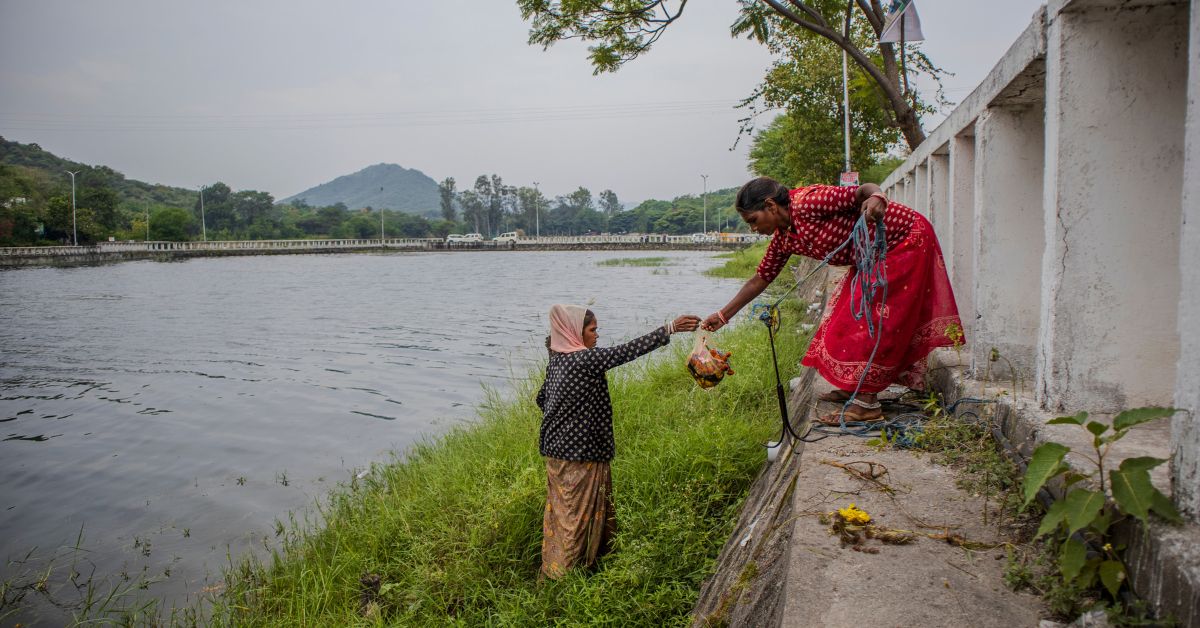 Tribal women Gyanwati and Bhanu clean Navratri offerings from the lake under the AMRUT initiative, reflecting community efforts to preserve this ancient water tower.
Tribal women Gyanwati and Bhanu clean Navratri offerings from the lake under the AMRUT initiative, reflecting community efforts to preserve this ancient water tower.
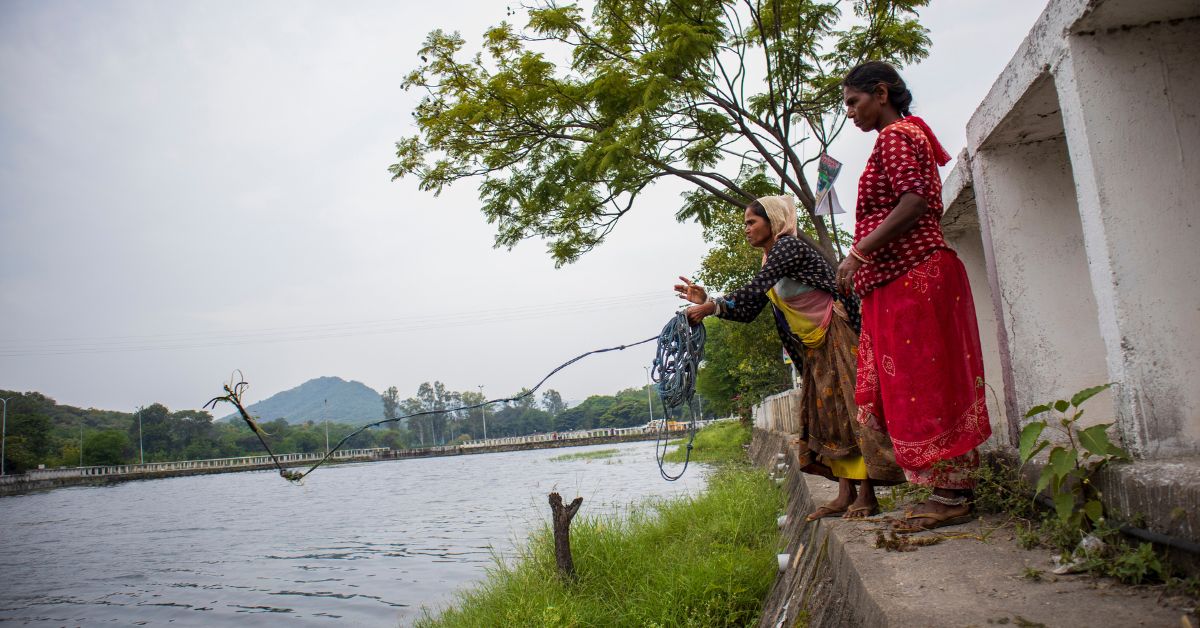 Under the AMRUT initiative, tribal women Gyanwati and Bhanu remove festive offerings from the lake — a powerful reminder of community-led conservation.
Under the AMRUT initiative, tribal women Gyanwati and Bhanu remove festive offerings from the lake — a powerful reminder of community-led conservation.
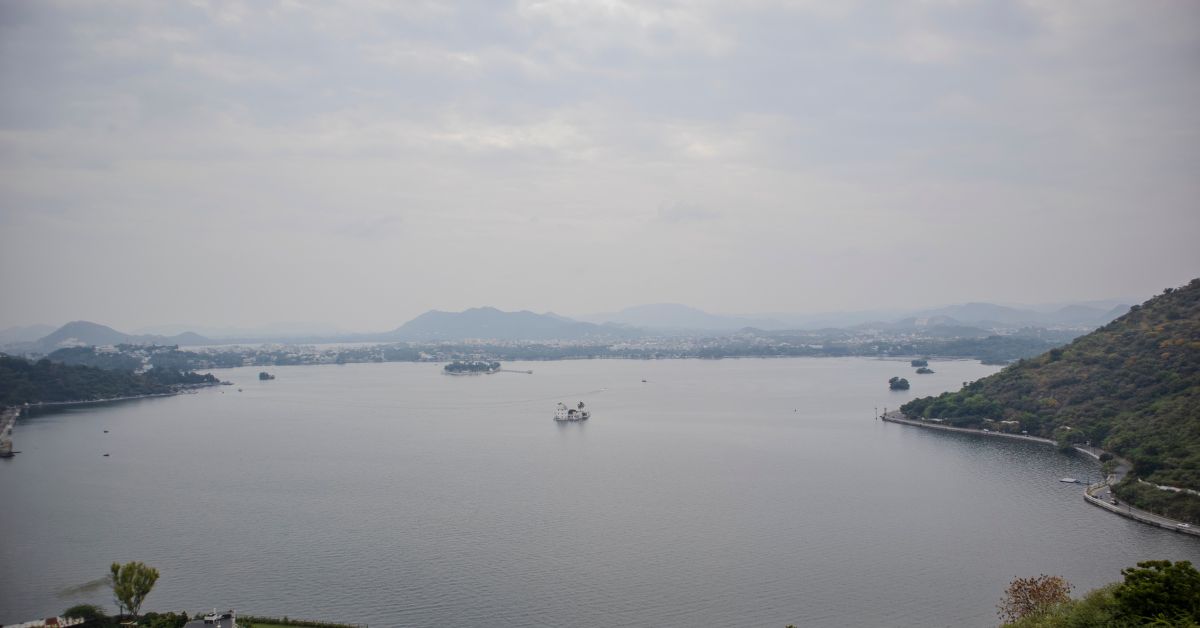 Fateh Sagar and Pichola lakes glisten amid the Aravallis — a scenic reflection of Udaipur’s bond with nature and design.
Fateh Sagar and Pichola lakes glisten amid the Aravallis — a scenic reflection of Udaipur’s bond with nature and design.
A global model in the making
Udaipur’s lakes stand as a prime example of sustainable water management that has withstood the test of time. As cities worldwide grapple with water scarcity, this age-old reservoir system offers valuable insights into how engineering ingenuity, traditional knowledge, and community participation can create long-term solutions. With continued effort, Udaipur’s lakes can remain a thriving water tower for generations to come — and serve as an inspiring model for water-scarce regions around the world.
Edited by Khushi Arora
Sources
AMRUT Scheme: by PIB Delhi, Published on 22 December 2022
News